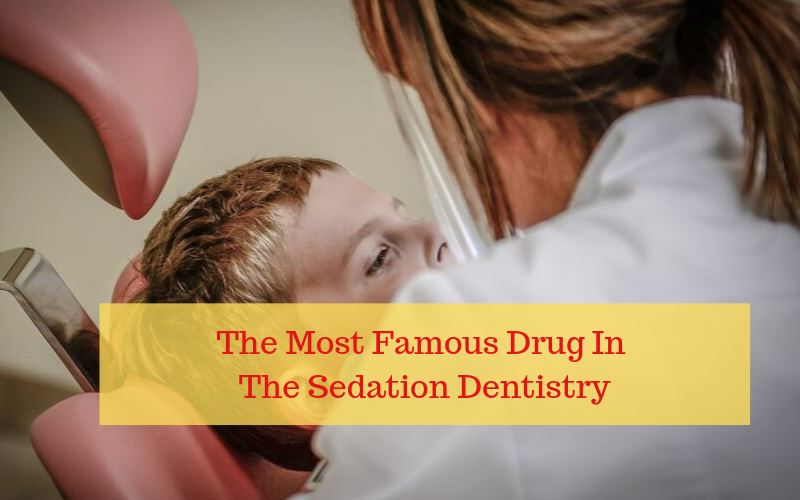The medical technology has developed to a grander range in the past few decades and with this medical advancement, there has been immense development in the medical procedures, surgical techniques and electronic devices for curing the diseases. Certain drugs like sedatives have been applied for dental procedures to reduce the feeling of anxiety in patients as the patients are very scared to even the thoughts of pain they will suffer during the dental treatment. Generally. The patients with moderate to high levels of anxiety are very likely to miss the dental appoints and this leads to poor oral hygiene and even leads to further amplification of dental problems. The majority of these kinds of anxious patients can be safely and successfully treated with oral sedatives. Before proceeding deeper into the sedation dentistry and drugs commonly used as sedatives, let’s have some knowledge about sedatives.
What Are Sedatives?
Sedatives comprise of the class of drugs that are commonly used to relax the central nervous system. It is also known by the name of tranquilizers. Sedatives generally include benzodiazepines, anesthetics, anti-histamines and much more. Before the development of sedatives, the common drug which was used to relax the central nervous system was alcohol and is till now used by the people extensively on non-medical grounds as a stress-buster. The sedatives are not only used in the treatment of anxiety and depression but they have many uses in the dentistry also.
Commonly Used Sedatives In Dentistry

Sedation dentistry comprises of the oral administration of sedatives in order to facilitate a dental surgery or procedure to reduce the feeling of anxiety in patients during the procedure. Sedatives also help in the reduction of memory or sights of the smell of the dentist cabin so as to avoid recall of any kind of trauma. Generally, the following sedatives are commonly used during dental procedures: –
- Triazolam
- Lorazepam
- Diazepam
- Hydroxyzine
- Promethazine
- Zaleplon
- Diphenhydramine
- Ramelteon
- Eszopiclone
- Zopiclone
- Midazolam
- Ketamine
- Propofol
- Dexmedetomidine
All the aforementioned drugs are generally utilized in the dentistry as these are quite efficient and their harmful effects have not been known. These generally have different modes of administration i.e. oral, inhalants, syrups, tablets and much more.
Importance Of Sedatives In Dentistry
Along with the reduction in levels of anxiety and fear, many benefits of sedation dentistry include the reduction of pain and discomfort caused during the surgical procedure. Reduction or absence of pain help to complete even the complex procedures in a short duration of time. Unlike anesthetics which cause complete unconsciousness in the patients, sedatives keep the patients conscious and responsive and keep them in a relaxed state.
The Most Preferred Sedative In Dentistry
The most commonly used dental sedative is midazolam which is commonly employed in nearly all kinds of dental procedures as it is very effective and starts producing its effects after 2-3 minutes of administration. Midazolam was first manufactured by Fryer and Walser in 1976 and it is a drug that acts in a similar way as diazepam. It belongs to a class of benzodiazepines which acts by activating the γ-aminobutyric acid (GABA) receptor complex leading to hyperpolarization of the neurons and reducing their excitability.
Midazolam works by minimal reduction of breathing and cardiovascular systems. It has also an inimitable property of being anterograde amnestic which is very useful in short term loss of memory during the treatment so as to avoid any kind of anxiety to arise by the memory or sight of instruments at dentist’s clinic. The peak effect of midazolam is reached after 2-3 minutes of administering the drug and it has a half-life of 6-15 minutes indicating that the drug is effectively taken by the tissues. It is available for administration by oral. Rectal, intramuscular, intravenous and intranasal routes and has been extensively used in dental procedures for its quick response and effectivity. The high lipid solubility causes this drug to be effectively absorbed in the liver and hence remains in the body for a shorter duration of time.
The drug midazolam was approved initially in 1985 by the US FDA and has been approved by later by many other agencies too. In 2018 it was approved for being administered by the intramuscular route for the treatment of status epilepticus in adults. In May 2019, the nasal spray of this drug was being approved for the treatment of seizure episodes in patients of 12 years of age and above.
The drug is more water-soluble when given intravenously and is less irritating and causes fewer side effects and pain. Unlike diazepam, the metabolites of midazolam are not pharmacologically active, so the patients after administration of this drug and dental treatment can be sent home without any need of keeping them under observation. The midazolam produces significant amnestic effects that remain for a longer duration of time as compared to other sedatives like diazepam. Out of the commonly used routes of administration, the intranasal route is the easiest and effective route of administration producing competent results within a shorter duration. Although the intravenous route is quite effective, it is not suggested for use in children as it may further trigger fear of injections in children which may lead to further complications during the dental procedures.
Midazolam is the lone drug which is approved by the United States Food and Drug Administration for use in juveniles in which the half-life is significantly prolonged to 6-12 hours.
Some of the common side-effects of sedatives include drowsiness, light-headedness, slurred speech, low heart, and breathing rate and much more. However, these are common effects because the sedatives keep the central nervous system relaxed so that the patient dint get panicky while the surgery is going on.
The use of sedatives will allow the patient to visit the dentist in a stress-free and calmed state and the patients will be able to get better treatment in a shorter time duration as anxiety and fear always impede the effectiveness of the treatment and may refrain the patients from maintaining proper oral hygiene. The proper selection of medication and management are paramount in maintaining safe practices of sedation.


